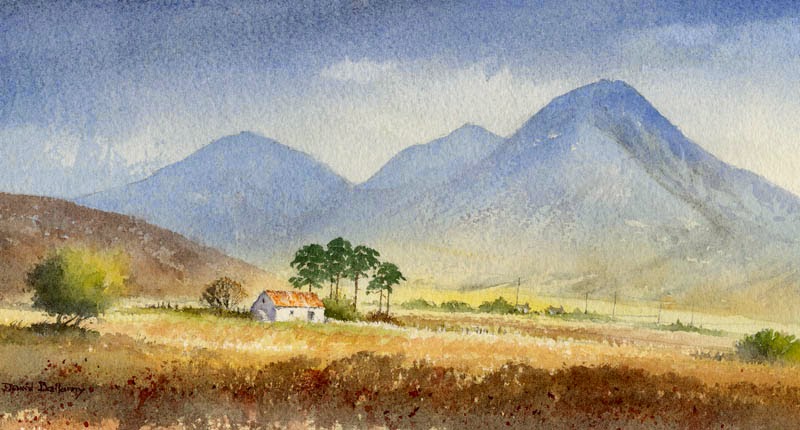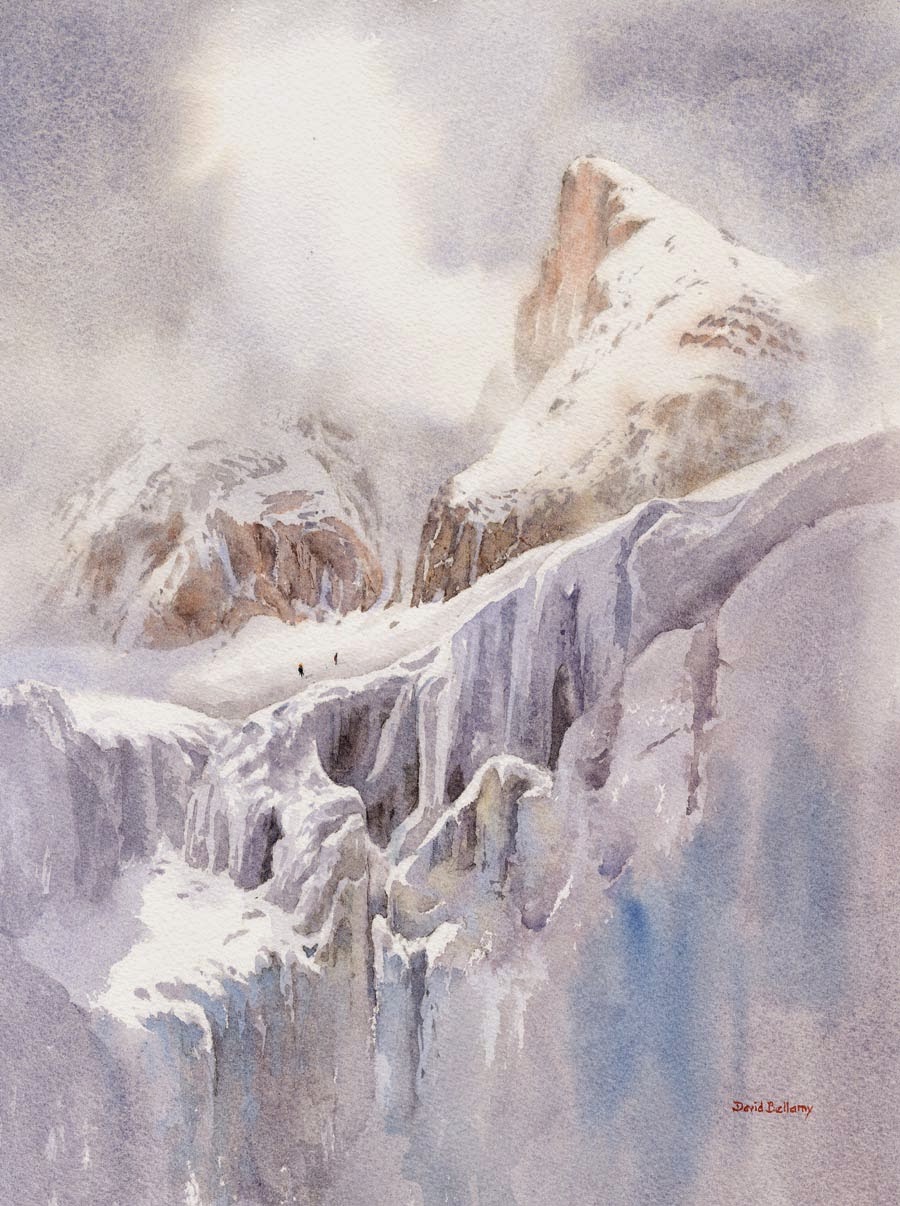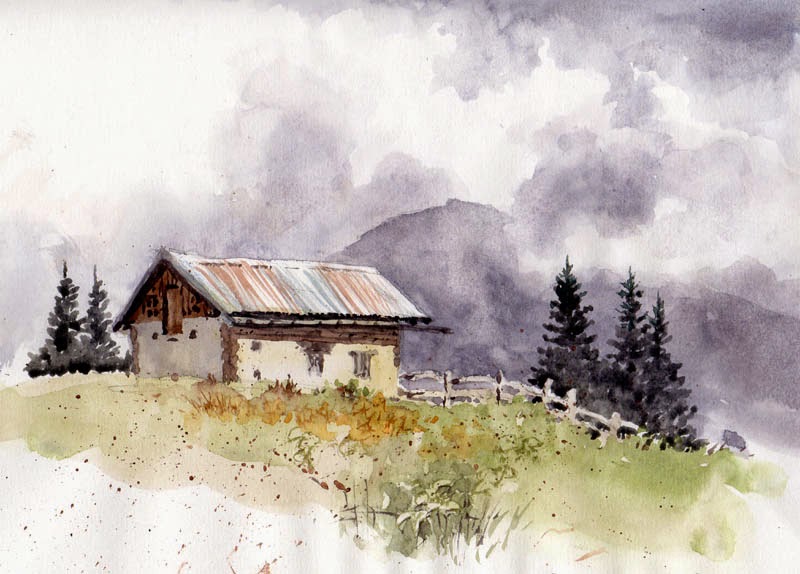My work tends to gravitate to those places I love most – the mountains, the wild coast and remote places where nature is supreme, where the ground is generally pretty rough. Capturing this roughness in a painting can be very rewarding, and as rough ground is not found only in the wild areas it pays to be able to render this effectively.
In this watercolour of a barn on the Isle of Skye rough terrain dominates the scene. I chose Saunders Waterford rough 140-lb paper which works so beautifully when you wish to create these fascinating rough textures, and effectively does half the work for you. With the highest mountain I began with an overall wash of Cobalt blue, bringing in some yellow ochre near the bottom in a soft graduation. When all this was dry I then used a stronger mixture of the blue with little water on the brush, dragging it down in the direction of the slope to produce an overlaid wash of broken colour which allowed some of the previous wash to show through, thus creating the appearance of rough ground on the mountainside. I employed the same technique on the warm-coloured left-hand hill, making the contrast between the first and second applications much stronger than those on the mountain because the hill is so much closer. In front of the barn I’ve used a combination of drybrush and dabbing on a warm colour to suggest the rough grasses, over an initial wash of Naples yellow. You can apply this broken colour technique in many situations, but for rough terrain it is ideal.
This painting will be displayed in my forthcoming exhibition at the Windrush Gallery in Windrush, Gloucestershire OX18 4TU Tel. 01451 844425 from Sunday 3rd to Sunday 10th May. Please note it will be limited opening on 7th and 8th May during a workshop. Opening hours are from 11am to 5pm The exhibition covers a wide range of subjects, including mountain, marine, pastoral and several overseas paintings.






